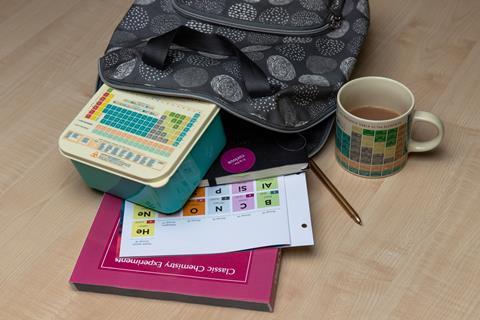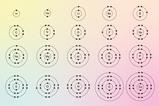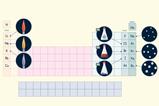Encourage your pupils to use the periodic table as a resource to boost their problem-solving skills
Very often, when I ask a question in a lesson, every one of my students turns their head to the side. This isn’t a group tic; they’re looking at a large periodic table on the wall. I tend to wave at it when I talk to classes, pointing out the relationships and stories it tells, so they’re in the habit of looking for it.
Just as we learn to scan written articles for information, we need to help our students ‘read’ the periodic table in a similar way. They don’t need to memorise it, but it should be familiar enough that they can quickly locate the more common elements, and scan it for clues when elements are unfamiliar.

We need to invest lesson time to help students navigate this vitally important chemists’ map, making sure it’s accessible throughout each lesson. At the start of each lesson, I explicitly tell my students to dig out their periodic tables.
Retrieval practice can make procedures, such as finding and interpreting mass numbers, more automatic. If you start lessons with review questions, make sure at least one requires students to use their periodic table. The more practised students are at this, the less time they’ll spend searching for information, leaving them more able to think creatively and apply ideas they’ve learned.
But as important as the mechanics are, we should also focus on the wonder of the periodic table itself and how it’s arranged. Inspiring awe and wonder in students is easy for chemistry teachers – with a colourful reaction, a flame-throwing demonstration or a good story. When I tell my students that matter is mostly composed of empty space, and without it you’d be smaller than a grain of salt, they look shocked. Yet, talking about how the periodic table was compiled never elicits this response!
Awe and wonder
While the development of the periodic table is a slow burner, and doesn’t pull the same punch as watching someone set methane bubbles alight, persevere and help students unpack the complex story behind it. Don’t simply view the development of the periodic table as a stand-alone aspect of the exam specification you just have to cover.
With the privilege of hindsight, we know that the composition of the periodic table is inextricably linked to the structure of atoms. Group 1 contains relatively soft metals that react readily with water, and similarities in their electronic structure help explain this. But when Mendeleev produced his periodic table, electrons hadn’t actually been discovered yet. This surely prompts pause for thought.
You might assume that by the time students choose to study post-16, they will be really familiar with the periodic table and how to navigate it. In my experience, it’s still worth taking time to review it and revisit the basic principles before unwrapping it further.
As students progress in post-16 chemistry, they find out more about how the periodic table is organised. Revisiting shells, which they encountered at age 14–16, they learn about orbitals, and discover why the s, p and d blocks are so-called; and why the d-block metals deserve their own distinct section. They also begin to appreciate more of the detail in the table’s repeating patterns. It’s not just a series of metals on one side and non-metals on the other, but a progression of changing properties across each period. Periodicity runs through many post-16 specifications, so keep it in mind throughout, ensuring you cross-reference the ideas regularly.
There are obvious links, such as trends in reactivity or the structure and properties of compounds. But try to include any inferences you can make from the periodic table, even unconsciously, alongside any explanation you give. What would you predict about the electronegativity, atomic radius, state at room temperature, tendency to form ions, for example? And how does this relate to what you’re thinking about here?
It’s fascinating to think this level of detail wasn’t known when Mendeleev arranged the elements into a table, yet the wonder of science is that it still basically fits our modern knowledge, even though the table has developed further since. After all, science is simply a series of models that we find evidence for (or against). The strength of the periodic table is demonstrated by its constant use, around the world, 150 years after its creation. All the more reason for it to be a student’s best friend.














No comments yet